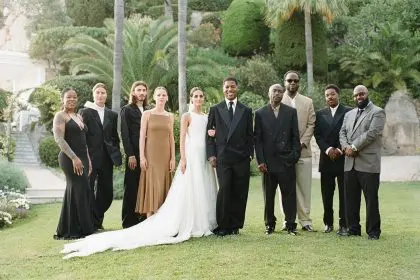In a candid conversation that bridges the earthly and divine, renowned saxophonist Kirk Whalum unveils the mystical dimensions of jazz, sharing intimate stories of supernatural moments and spiritual revelations that have shaped his musical journey.
At age 22, while attending Texas Southern University, Whalum witnessed what he describes as his first and only miracle during a Pharaoh Sanders performance at a small Houston jazz club. “He took his mouth off the mouthpiece, and the sound kept going,” Whalum recounts with unwavering conviction. This otherworldly experience would become a cornerstone of his understanding of jazz’s spiritual potential.
Breaking into souls
Whalum speaks of instrumental music as possessing an almost supernatural ability to transcend ordinary barriers. “We can break and enter into people’s souls, especially as instrumental musicians,” he explains. “You don’t have an alarm system to keep me out.” Yet this spiritual breaking and entering isn’t meant for theft but for giving, as he notes that musicians like Pharaoh Sanders enter listeners’ souls “to deposit something of beauty, of meaning, of worth.”
For Whalum, a practicing Catholic who embraces mysticism, jazz represents more than mere musical expression. He describes it as a divine collaboration, where God becomes an active participant in the creative process. “Not so much us representing God, but God taking part in what we do,” he elaborates. This perspective helps explain why listeners often experience profound emotional and spiritual responses to jazz without fully understanding why.
Beyond commercial success
While acknowledging the commercial aspects of his career, Whalum maintains a deeply spiritual approach to composition. He references his new album “Epic Cool” as an example of balancing commercial viability with spiritual depth. Even when writing for smooth jazz radio, he ensures each piece contains elements that speak to something greater, drawing inspiration from masters like Mary Lou Williams and Bob James.
Whalum draws powerful connections between jazz and religious experience, particularly through the lens of John Coltrane’s “A Love Supreme,” which remains Coltrane’s best-selling record. He explains how Coltrane’s spiritual journey, beginning in the church and expanding into broader mystical exploration, exemplifies jazz’s capacity to transcend conventional religious boundaries while maintaining deep spiritual roots.
In discussing his role as an educator and mentor, Whalum emphasizes the importance of passing on not just technical proficiency but spiritual awareness. He speaks of the necessity of both rigorous practice and spiritual preparation, describing musicians as vessels that must be properly prepared “to be used for God’s purposes.”
The avatar principle
Perhaps most intriguingly, Whalum introduces the concept of the “avatar” in jazz performance, describing it as a version of oneself that emerges through dedicated practice and spiritual development. “It’s God coming through you,” he explains, adding that this requires “a whole lot of work, a lot of spiritual work, a lot of musical technical work” to achieve.
The conversation reveals how jazz continues to serve as a vehicle for spiritual expression and exploration, with artists like Whalum carrying forward a tradition that seamlessly blends technical mastery with divine inspiration. As he puts it, summarizing his artistic mission through three words: “grace, gratitude, and healing,” Whalum exemplifies how contemporary jazz musicians can maintain deep spiritual connections while creating commercially viable music.
The spiritual legacy
This spiritual approach to jazz, as Whalum demonstrates, isn’t about abandoning technical excellence or commercial success, but rather about ensuring that every note serves a higher purpose. Whether performing his new composition “Pillow Talk” or paying tribute to influences like Grover Washington Jr, Whalum maintains that the goal is to create music that resonates long after the performance ends, touching listeners’ souls in ways that transcend ordinary musical experience.
Through Whalum’s lens, we see jazz not just as an art form but as a spiritual practice, one that continues to evolve while maintaining its connection to the divine. His insights reveal how contemporary jazz musicians can honor their spiritual heritage while pushing the boundaries of their art, creating music that speaks to both the commercial demands of the present and the eternal qualities of the soul.















